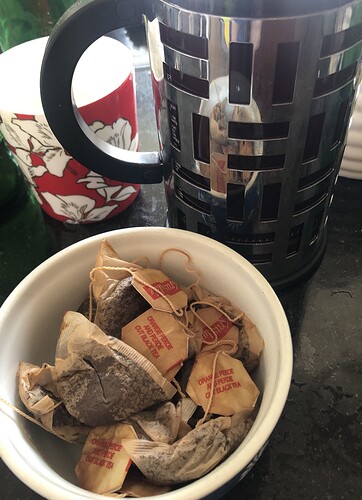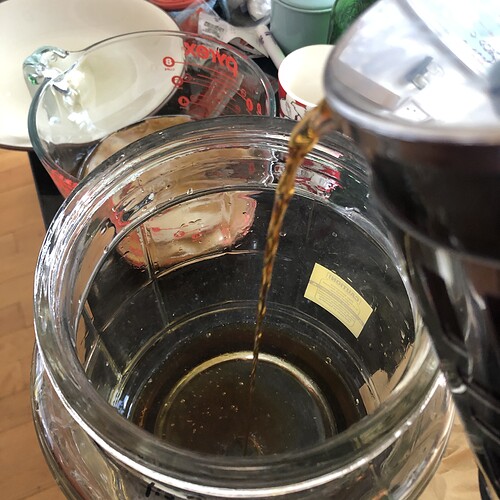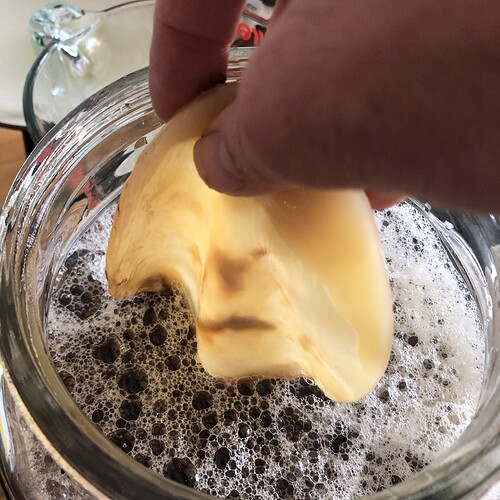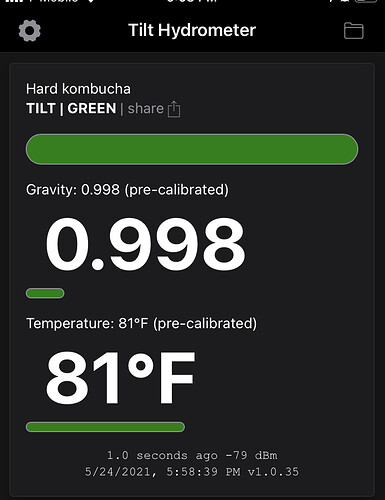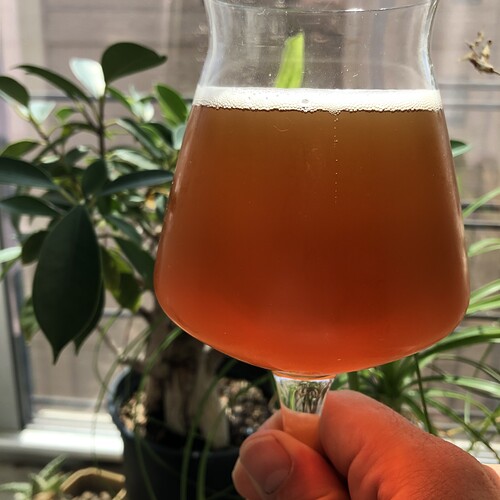There don’t appear to be many Kombucha brewers here, which is shame because making Kombucha combines many of the things that make beer brewing great into a healthy alternative to beer. Well this thread is about putting the alcohol levels up a bit. The result of a hard kombucha could then be a more sophisticated version of hard seltzer with many of the health benefits of kombucha.
For my process I’m going to be making a 1.5 gallon back of kombucha. Do do so I will make a strong tea starter which is 10 bags of tea, either black or green, steeped for 15mins in 160 degree water. After steeping I add 1.5 cups of sugar and let cool. This brew is analogous to what we might call a pre-hopped LME in beer brewing.
The next part of the process is to gather your kombucha starter. In this case I am harvesting from a previous batch but if you are starting this for the first time you would buy a mother SCOBY from your LHBS or from our host who has a few Kombucha kits.
I take the newest SCOBY, or all of the SCOBYs and 2 cups of Kombucha from my finish batch and put the aside to inoculate the new brew,
In this case I bottled the finished Kombucha and primed the bottles for conditioning using banana juice as the food source for the second bottle fermentation.
To begin your fermentation put your cooled strong sweet tea into your fermenter and partially fill the fermenter with good quality water leaving enough room for your harvested SCOBY and the 2 cups of kombucha you have set aside or your newly purchased SCOBY.
Kombucha fermentation is an aerobic fermentation.
I use a large coffee filter and rubber band to protect my fermentation. Others use a clean thin cloth such as you would find a pillow case made from. The fermentation should be done away from strong sources of light or heat
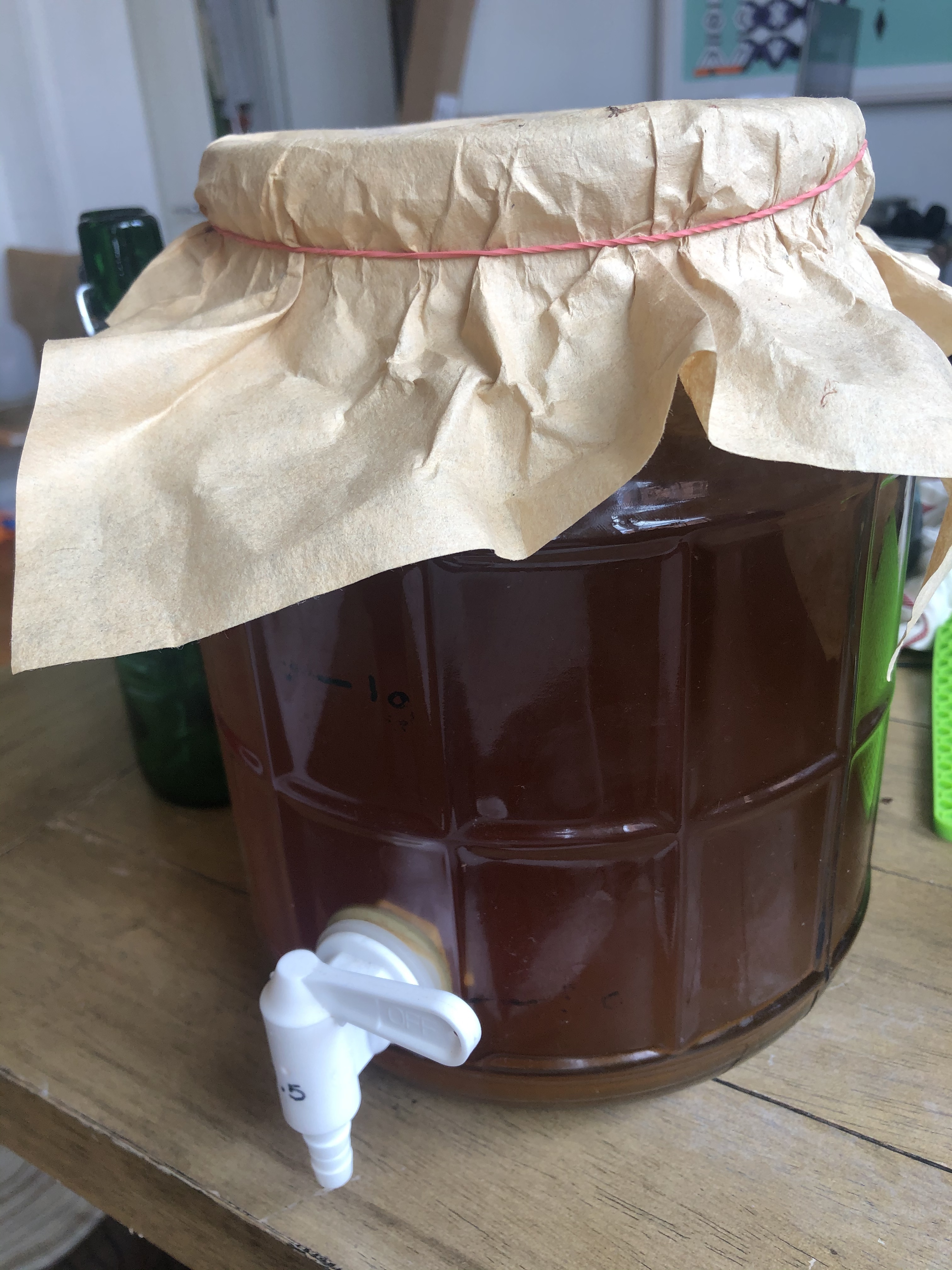
In 7 to 10 days typically, your batch will be fermented. Some people prefer longer others like shorter. The longer it goes the more acetic acid is created. It typically aim for 10 to 14 days. When complete your begin the process again.
In the case of the Hard Kombucha I plan to make 1 gallon of this batch will be used as my starter for the recipe.

The 5 Gallon recipe I’m trying is a hybridization of a hard seltzer recipe.
1 Bring 4 gallons of brewing quality water to a boil, shut off heat, and stir in 4.5 lbs. of corn sugar.
2 Cool to around 160 F and add one 1 oz packet of Propper Seltzer Yeast Nutient
3 While still at 160F your creativity of Kombucha ingredients can come into play. I add 26 bags of Bigelow Pomegranate Green Tea and 1 bottle of Pomegranate Syrup…
4 Let your tea steep for around 15 to 20 minutes.
5 Cool your 4 gallons of sweet tea to the pitching temperature of the yeast your are going to use. I recommend a yeast that is clean and not fussy about temperatures. In this case I pitched Voss Kveik Yeast at 80F.
6. Top off to 5 gallons with your previously fermented 1 gallon of kombucha and add your SCOBY.
This recipe yields an OG of 1.047 and one can expect to reach a FG of 1.00
7 Days later I’m getting close to finished with a gravity reading of 1.001
You can see the original SCOBY nestled in with formations of a larger SCOBY.
This second fermentation is happening in the anaerobic environment of a sealed 6.5 gallon fermenter so I do not think that a proper SCOBY is going to be able to form and as a result if should not have that much acetic acid.
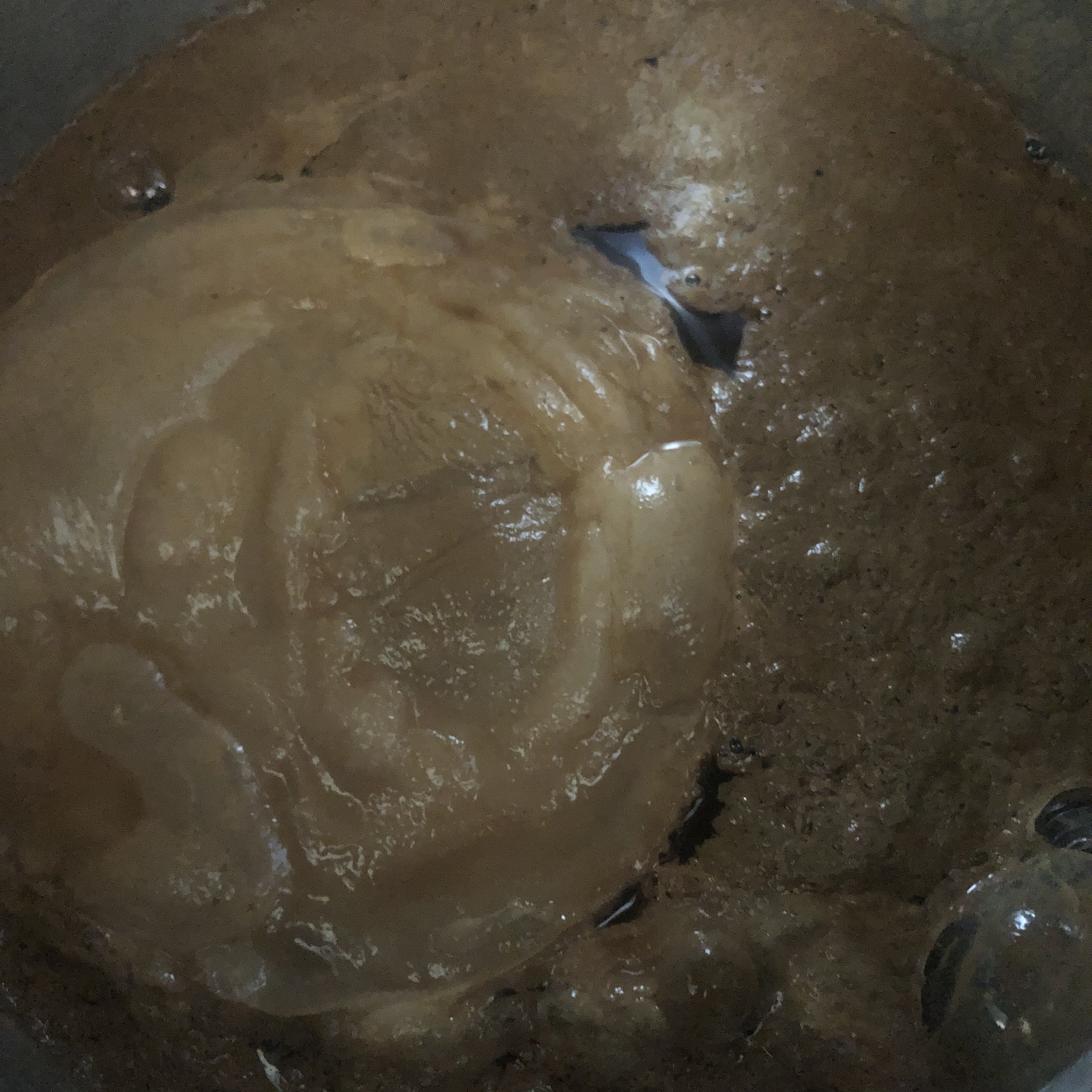
I was looking at making kombucha probably have to revisit that. Im trying to get more and more probiotics into my gut besides beer yeast
Yes, I have been studying up as well, just haven’t pulled the trigger yet. Thanks for this interesting read.

Rad
After one week, well it dropped from 1.000 to .998 in 8 hours. So I think the SCOBY is now preventing the Tilt from working
Well I’ve drunk just about the whole batch of hard kombucha without posting a picture. It aged pretty well and could go a bit longer. At 6% it’s very light and refreshing with just a bit of pomegranate and a nice acidic mid mouth. If I were to do this recipe again I would do a longer aerobic phase and a secondary on fruit.
